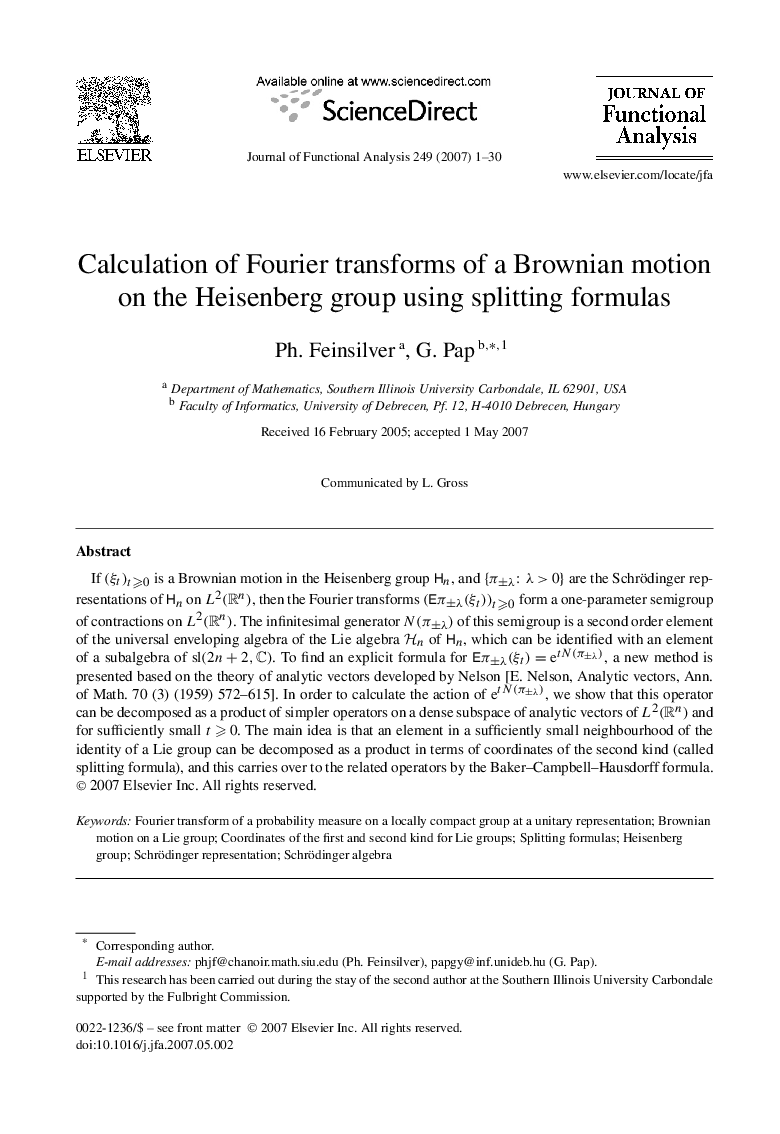| Article ID | Journal | Published Year | Pages | File Type |
|---|---|---|---|---|
| 4592139 | Journal of Functional Analysis | 2007 | 30 Pages |
If (ξt)t⩾0 is a Brownian motion in the Heisenberg group Hn, and are the Schrödinger representations of Hn on L2(Rn), then the Fourier transforms (Eπ±λ(ξt))t⩾0 form a one-parameter semigroup of contractions on L2(Rn). The infinitesimal generator N(π±λ) of this semigroup is a second order element of the universal enveloping algebra of the Lie algebra Hn of Hn, which can be identified with an element of a subalgebra of sl(2n+2,C). To find an explicit formula for Eπ±λ(ξt)=etN(π±λ), a new method is presented based on the theory of analytic vectors developed by Nelson [E. Nelson, Analytic vectors, Ann. of Math. 70 (3) (1959) 572–615]. In order to calculate the action of etN(π±λ), we show that this operator can be decomposed as a product of simpler operators on a dense subspace of analytic vectors of L2(Rn) and for sufficiently small t⩾0. The main idea is that an element in a sufficiently small neighbourhood of the identity of a Lie group can be decomposed as a product in terms of coordinates of the second kind (called splitting formula), and this carries over to the related operators by the Baker–Campbell–Hausdorff formula.
